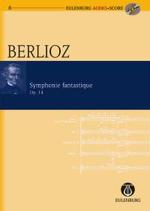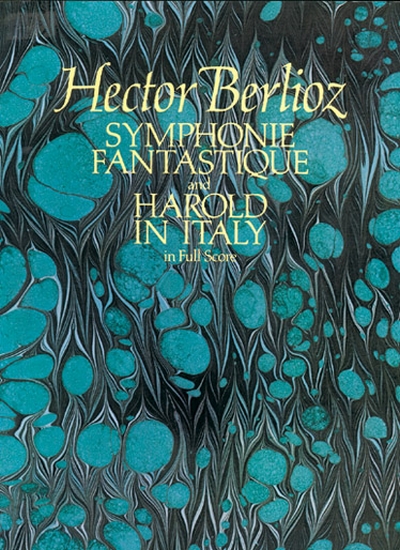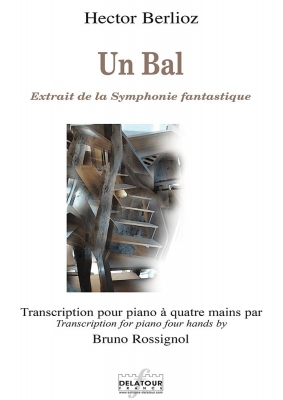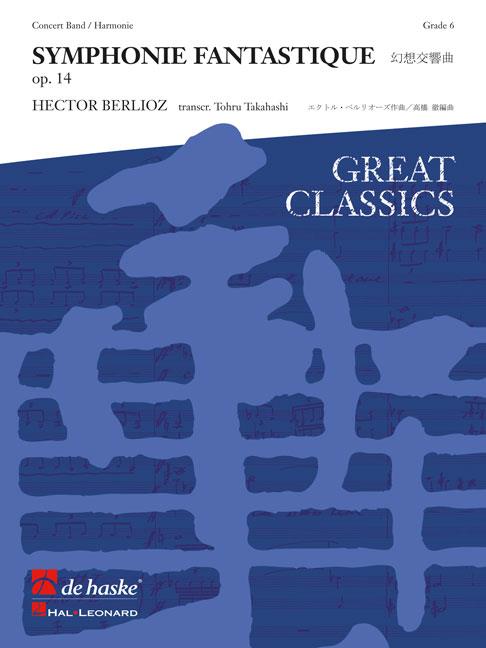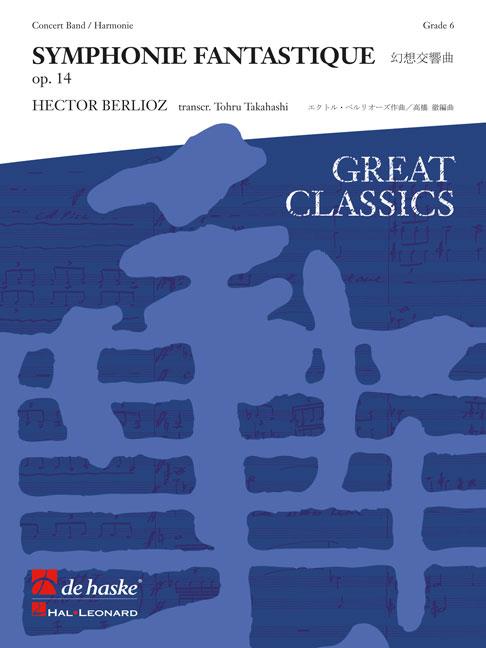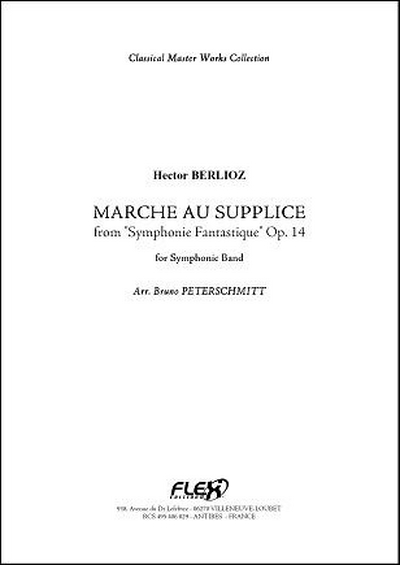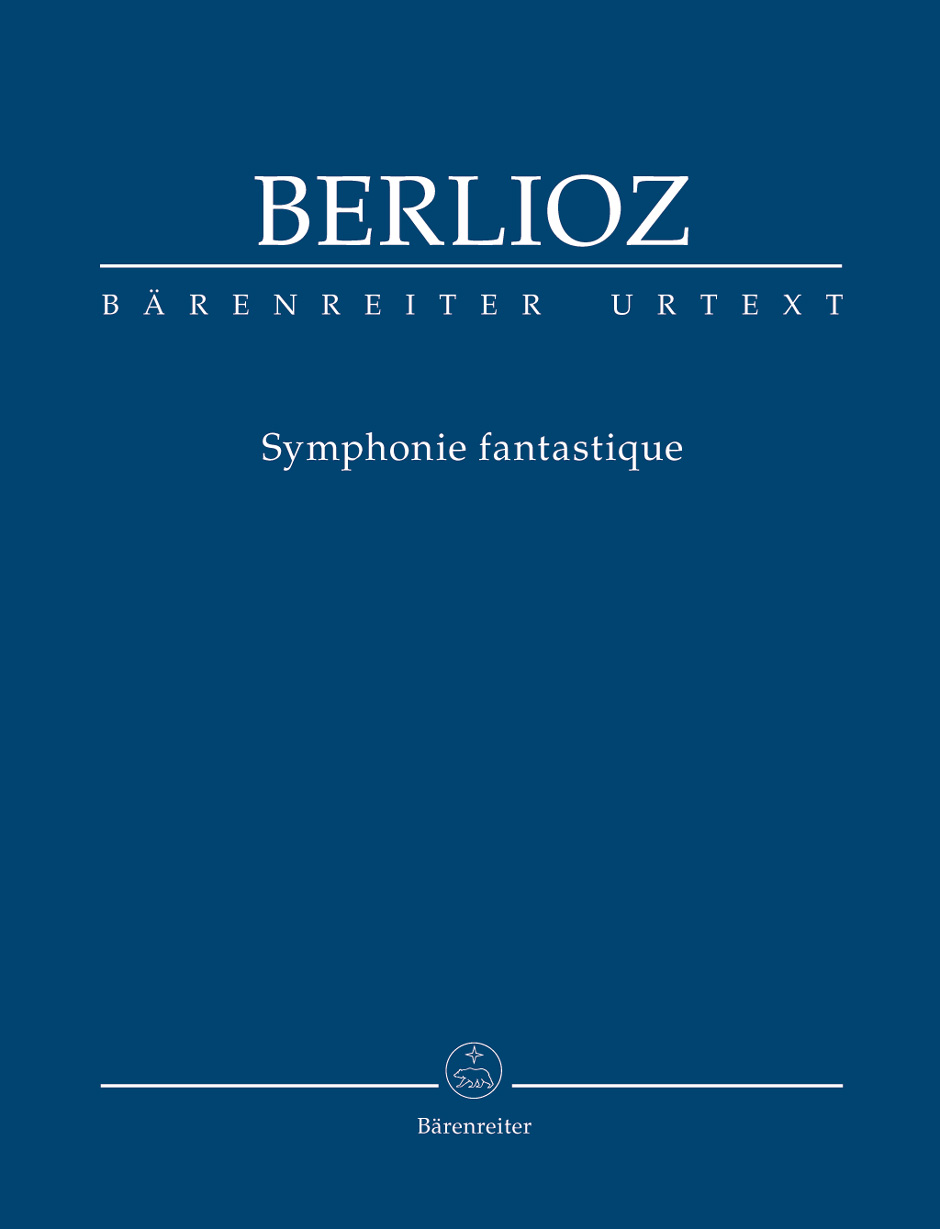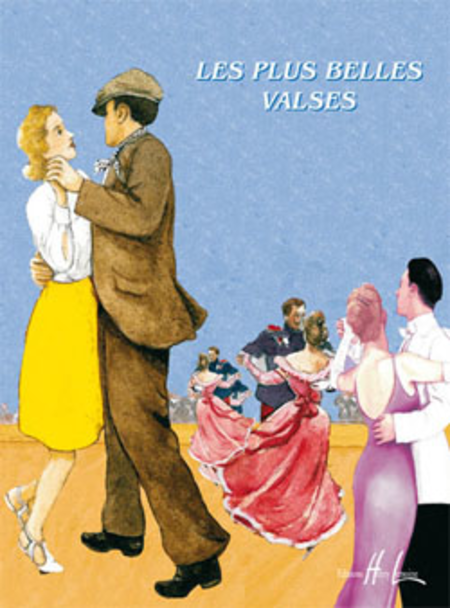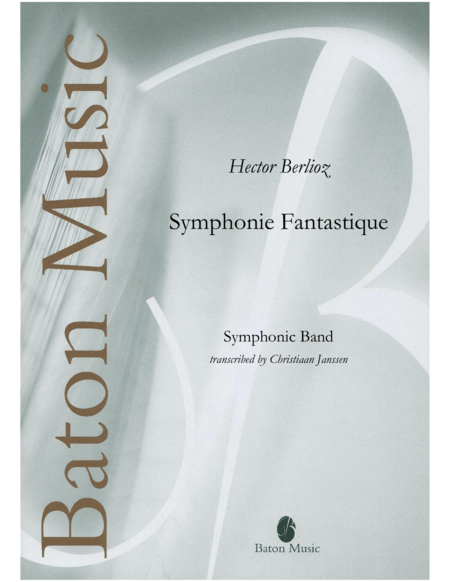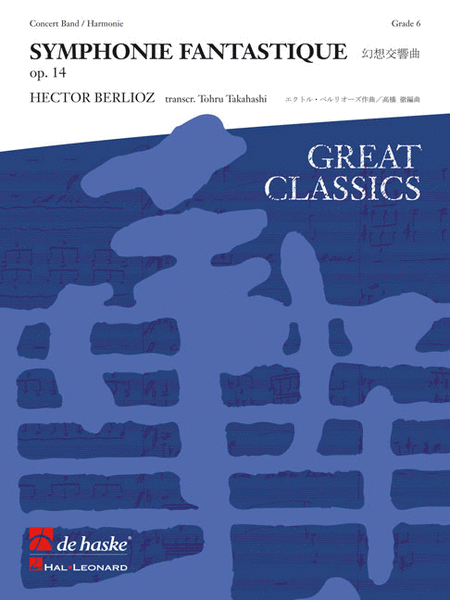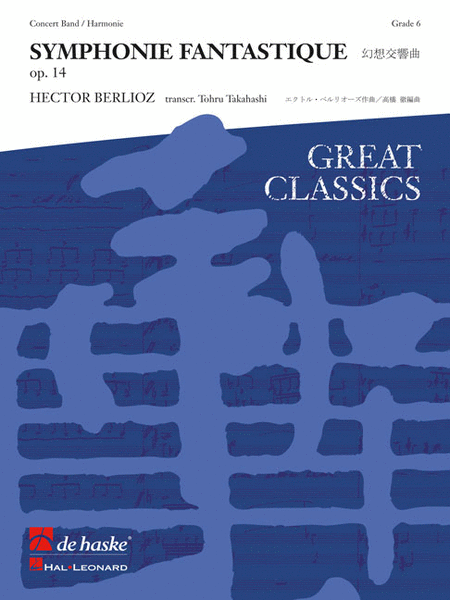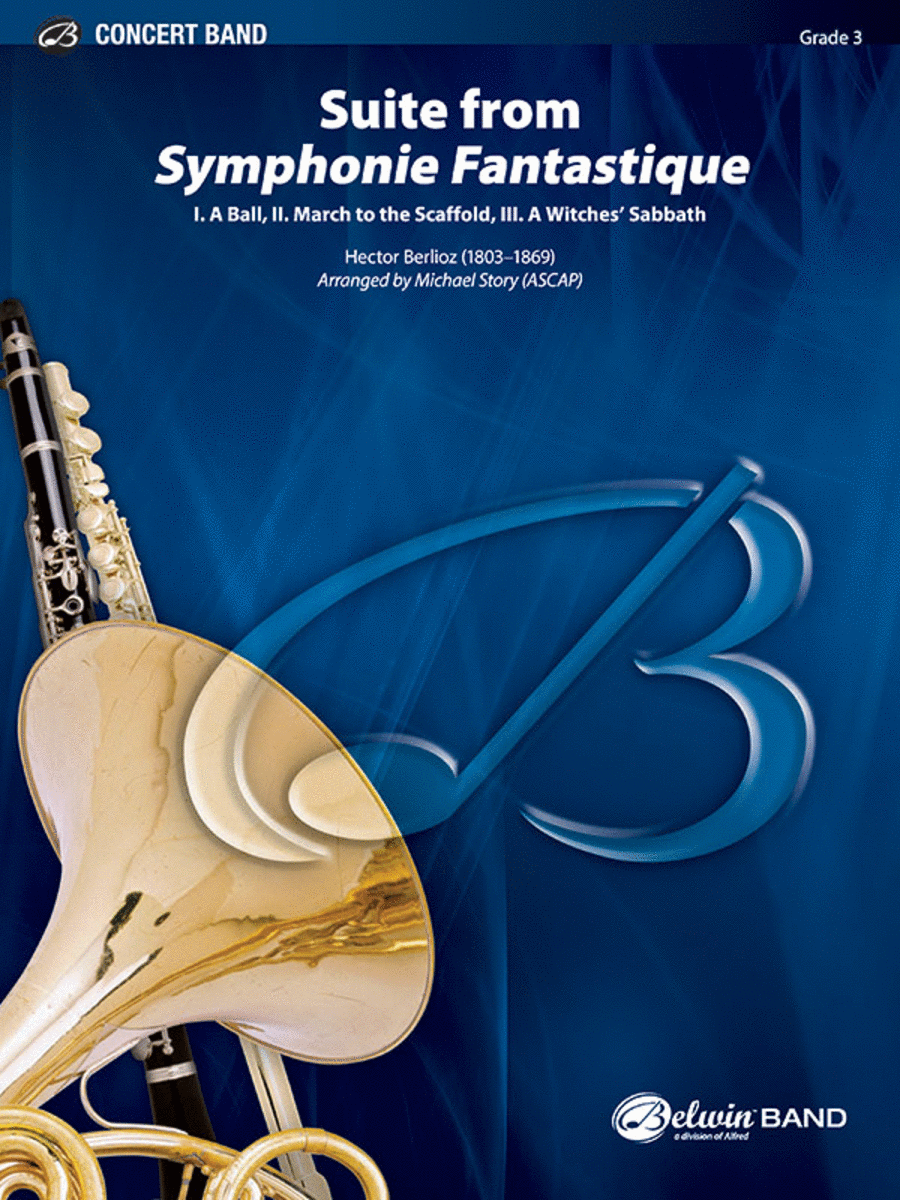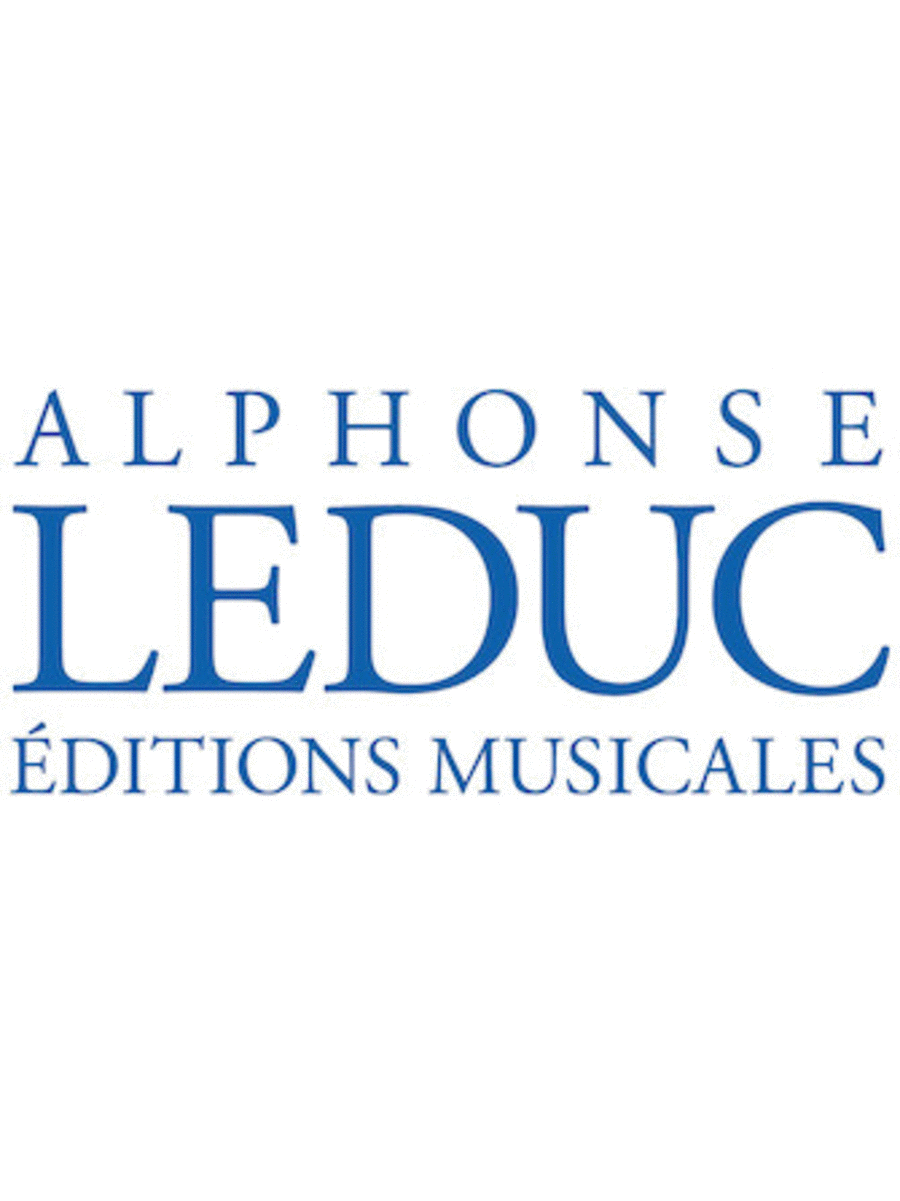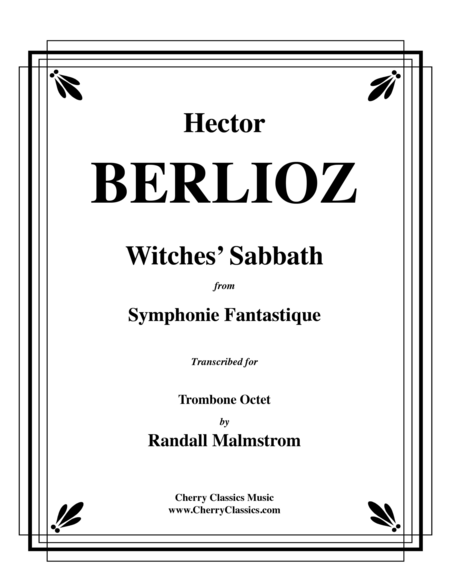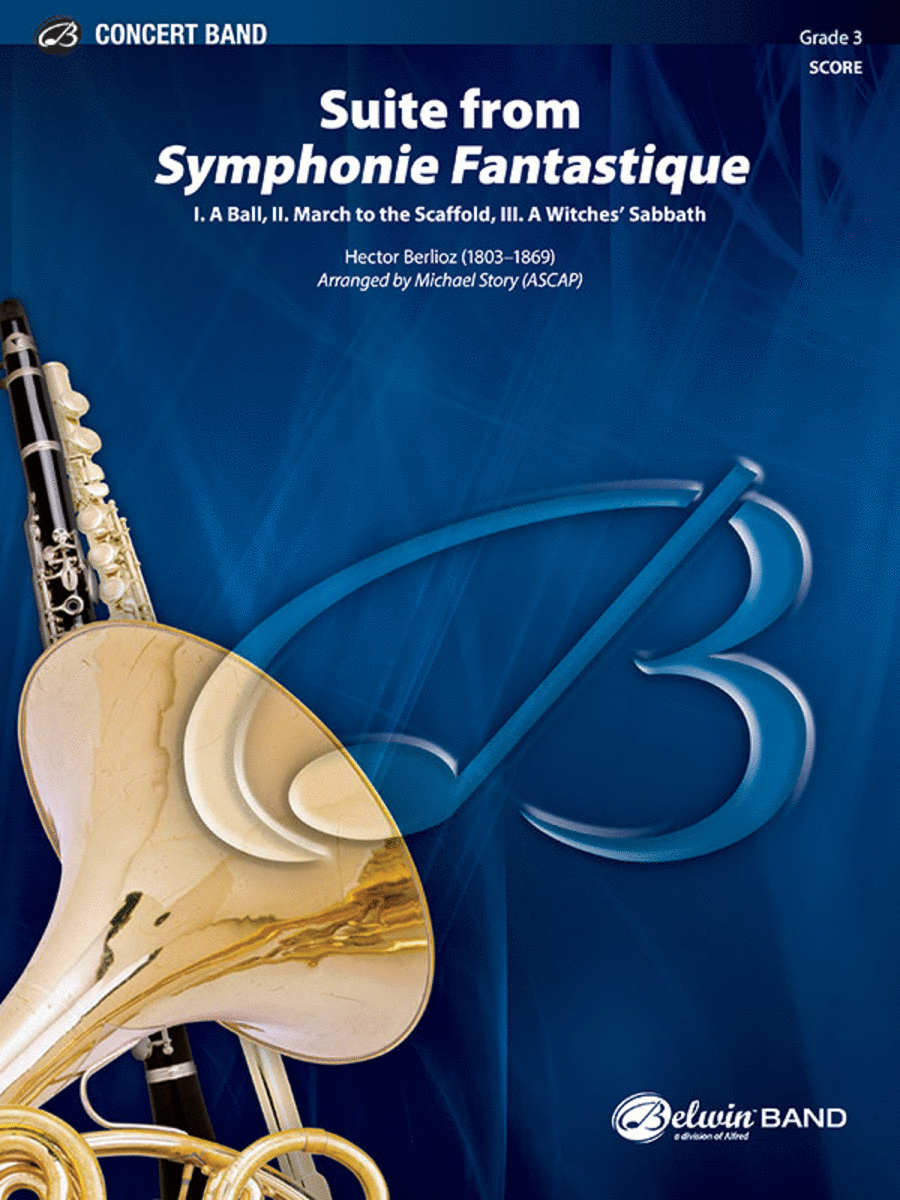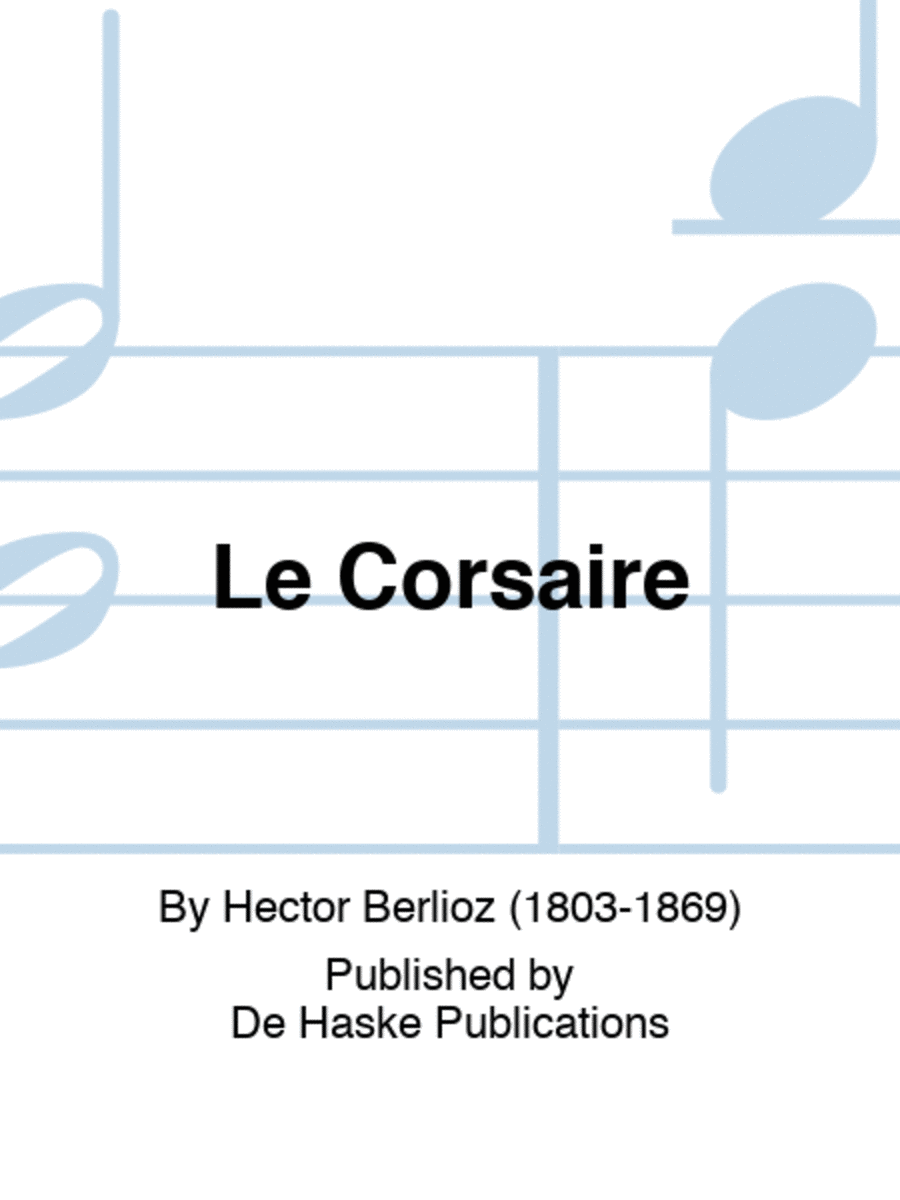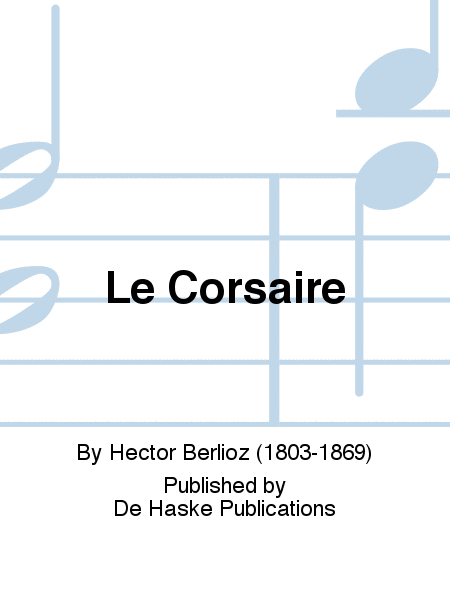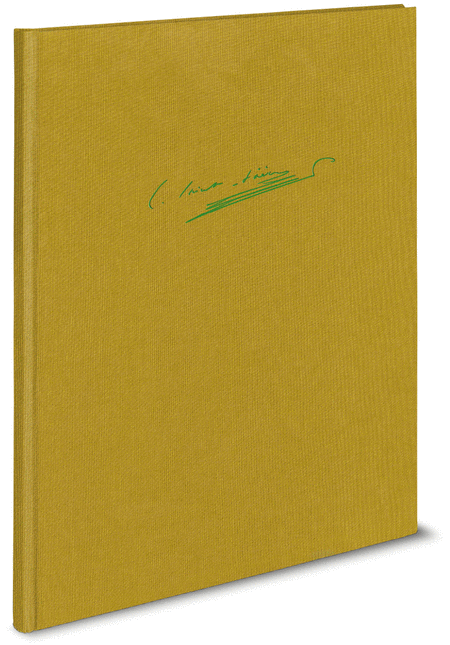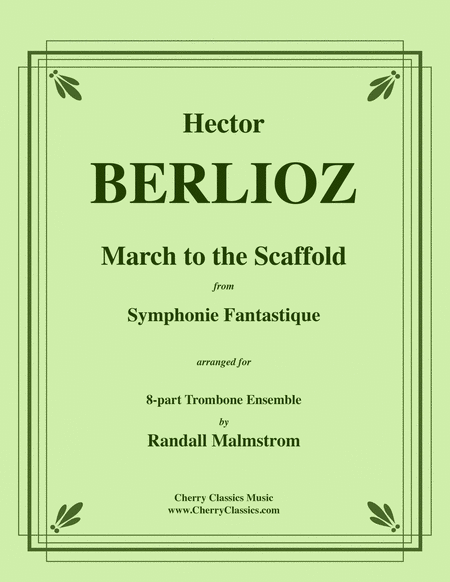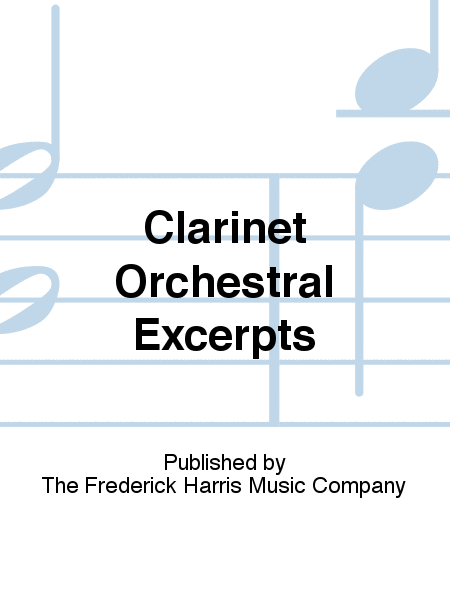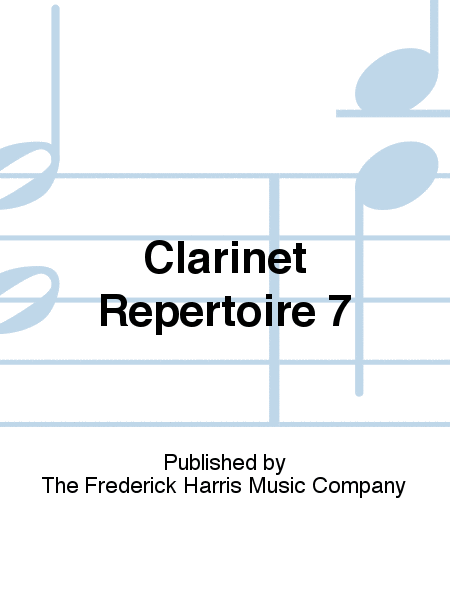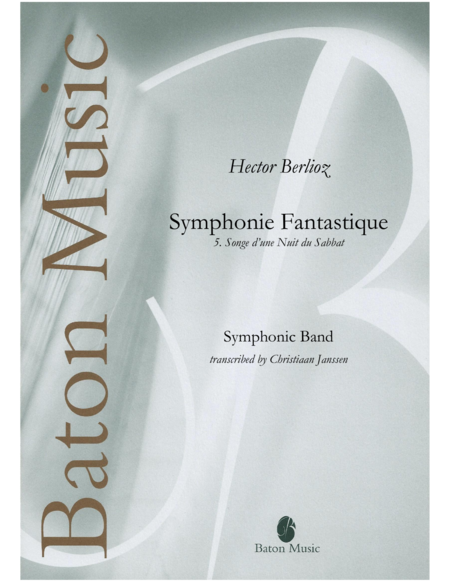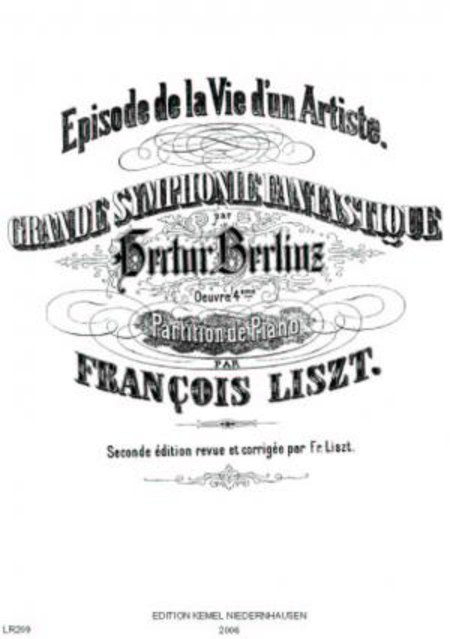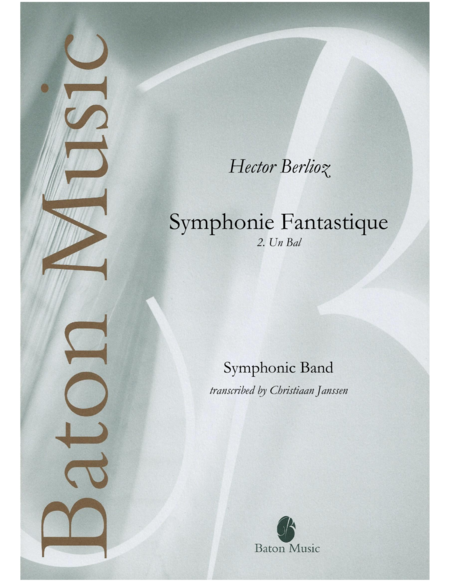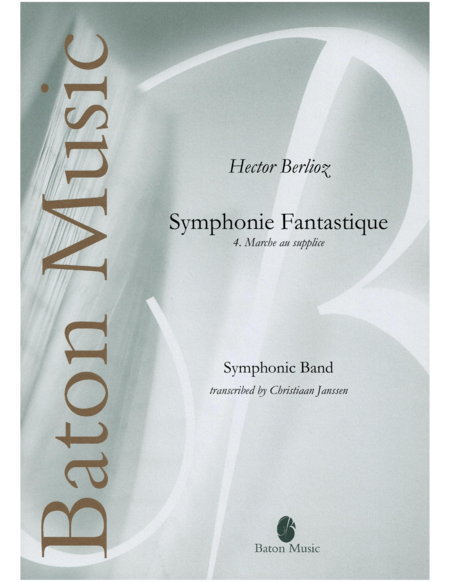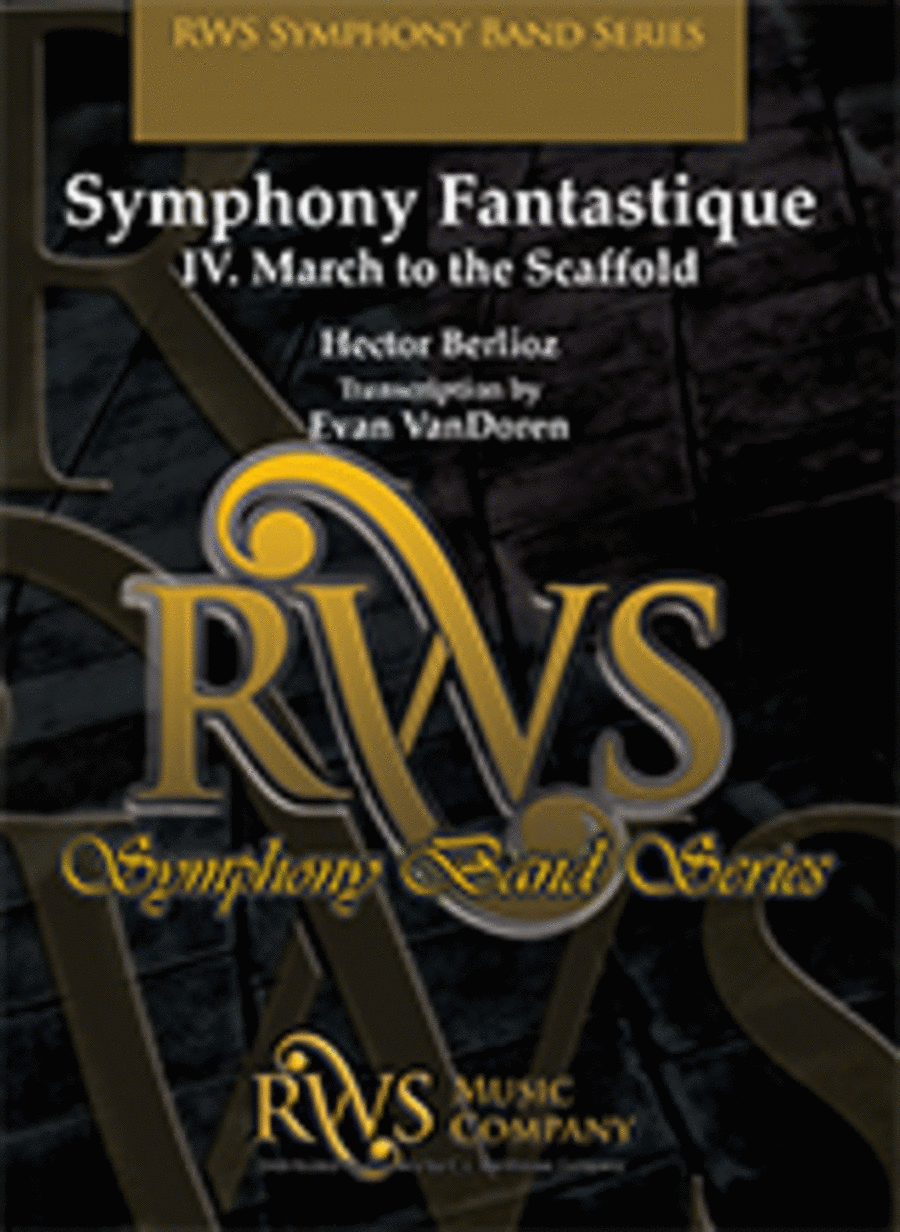|
| Symphonie
Fantastique-Harold
(BERLIOZ HECTOR)
Orchestre [Partition]
Dover Publications
Full Score. Par BERLIOZ HECTOR. Hector Berlioz (1803–1869), considered the fat...(+)
Full Score. Par BERLIOZ HECTOR. Hector Berlioz (1803–1869), considered the father of modern orchestration, possessed an intuitive musical genius all the more remarkable for his limited formal musical education. A brilliant colorist, a master of the unexpected rhythmic break, he brought a new symphonic richness to Romantic music. Both damned and venerated by his contemporaries — Mendelssohn considered him devoid of talent, Paganini declared him the one true heir to the spirit of Beethoven — Berlioz seems to have sought in music a way to soothe and give voice to the turbulent psychological instabilities and contradictions of what has come to be called 'program music' — i. e. , instrumental music with an extramusical significance. He strove to communicate musically the experiences, psychological themes, scenic description, and literary allusions more commonly associated with the confessional writings of Romantic poets. This Dover edition presents two of the greatest of these 'program' pieces: the Symphonie Fantastique (1830) and Harold in Italy (1834). Here are the full scores of both major symphonic works — painstakingly reproduced from the authoritative Breitkopf & Härtel edition, available for the first time in one convenient volume — plus Berlioz's 'program' for the Symphonie Fantastique. Musicians and music lovers everywhere will value this high-quality, inexpensive edition — ideal for study and performance. Reprint of Nos. 1 and 3 of Serie I, Symphonien (1900), of Werke von Hector Berlioz, Breitkopf and Härtel, Leipzig, 1900–1910. Breitkopf & Hartel edition./ Répertoire / Orchestre
Délais: En Stock | | |
| The Flûte Audition
Flûte traversière
Universal Edition
The New Essential Companion. Henrik Wiese, the internationally renowned orchestr...(+)
The New Essential Companion. Henrik Wiese, the internationally renowned orchestral and solo flautist, has spent four years compiling what promises to be the definitive guide to audition repertoire for students preparing for a seat in a professional orchestra. He has worked with his own students in Salzburg as they engaged in auditions, as well as with other professional players and his teaching colleagues at the conservatorium. He sourced repertoire lists from job advertisements past and present and referred to other audition lists such as those of Baxtresser and Wye. Considerable research has gone into the differences between existing editions of the chosen pieces even, surprisingly, from twentieth century composers such as Prokofiev and Stravinsky. 'The Flute Audition” then looks at practical matters such as page turns and metronome markings. Wiese comments, for example, that Hindemith's own recording takes a passage from 'Symphonic Metamorphoses” markedly slower than in the score. The result of all this painstaking research is the most comprehensive collection of international audition pieces yet published in a single volume.
'This is an excellent collection of orchestral excerpts for the next generation of young musicians. You can use it to prepare for auditions anywhere in the world. Whether it's for an opera house, symphony or chamber orchestra, everything you need is here.'/ Recueil / Flûte Traversière
Délais: 2-5 jours - En Stock Fournisseur | | |
| Le Corsaire (BERLIOZ
HECTOR)
Orchestre d'harmonie [Conducteur] - Intermédiaire/avancé
De Haske Publications
Par BERLIOZ HECTOR. Berlioz ne révèle aucun talent musical particulier dans so...(+)
Par BERLIOZ HECTOR. Berlioz ne révèle aucun talent musical particulier dans son enfance ; ses parents ne sont pas musiciens. Vers l’âge de treize ans, il apprend à jouer de la flûte à bec et de la guitare et prend des cours de chant. En 1821, il s’installe à Paris et marche sur les pas de son père en suivant un temps les cours de la Faculté de Médecine. Mais au bout d’un an, et au grand désespoir de ses parents, il abandonne ses études et entre au Conservatoire de Paris. Sa passion pour l’actrice irlandaise Harriet Smithson, qu’il épousera quelques années plus tard (un mariage malheureux), a largement influencé sa vie et sa musique. Lorsqu’il remporte le Prix de Rome en 1830, Berlioz avait déjàcomposé quelques oeuvres majeures dont la Symphonie Fantastique. Berlioz devient la figure essentielle du romantisme français. Ses oeuvres sont dominées par ses idées novatrices. La première version de l’ouverture Le Corsaire remonte à un séjour que Berlioz fit à Nice en 1844. L’oeuvre fut donnée en création sous le titre La Tour de Nice. Par la suite, Berlioz remania sa composition et lui donnera son titre définitif Le Corsaire. La référence au roman poétique de Lord Byron à qui le compositeur vouait une grande admiration, reste une supposition qui ne fait pas l’unanimité. Cette ouverture fut particulièrement saluée pour son originalité. La musique déborde d’énergie et les effets sont fantastiques. Il n’est donc pas surprenant de constater que Le Corsaire est une des oeuvres orchestrales les plus connues et les plus jouées de Berlioz. / Niveau : 5 / Transcription / Répertoire / Concert Band ou Harmonie
Délais: 2-5 jours - En Stock Fournisseur | | |
| Le Corsaire (BERLIOZ
HECTOR)
Orchestre d'harmonie [Conducteur et Parties séparées] - Intermédiaire/avancé
De Haske Publications
Par BERLIOZ HECTOR. Berlioz ne révèle aucun talent musical particulier dans so...(+)
Par BERLIOZ HECTOR. Berlioz ne révèle aucun talent musical particulier dans son enfance ; ses parents ne sont pas musiciens. Vers l’âge de treize ans, il apprend à jouer de la flûte à bec et de la guitare et prend des cours de chant. En 1821, il s’installe à Paris et marche sur les pas de son père en suivant un temps les cours de la Faculté de Médecine. Mais au bout d’un an, et au grand désespoir de ses parents, il abandonne ses études et entre au Conservatoire de Paris. Sa passion pour l’actrice irlandaise Harriet Smithson, qu’il épousera quelques années plus tard (un mariage malheureux), a largement influencé sa vie et sa musique. Lorsqu’il remporte le Prix de Rome en 1830, Berlioz avait déjàcomposé quelques oeuvres majeures dont la Symphonie Fantastique. Berlioz devient la figure essentielle du romantisme français. Ses oeuvres sont dominées par ses idées novatrices. La première version de l’ouverture Le Corsaire remonte à un séjour que Berlioz fit à Nice en 1844. L’oeuvre fut donnée en création sous le titre La Tour de Nice. Par la suite, Berlioz remania sa composition et lui donnera son titre définitif Le Corsaire. La référence au roman poétique de Lord Byron à qui le compositeur vouait une grande admiration, reste une supposition qui ne fait pas l’unanimité. Cette ouverture fut particulièrement saluée pour son originalité. La musique déborde d’énergie et les effets sont fantastiques. Il n’est donc pas surprenant de constater que Le Corsaire est une des oeuvres orchestrales les plus connues et les plus jouées de Berlioz. / Niveau : 5 / Transcription / Répertoire / Concert Band ou Harmonie
Délais: 2-5 jours - En Stock Fournisseur | | |
| Marche Au Supplice
(BERLIOZ HECTOR)
Orchestre d'harmonie [Conducteur et Parties séparées] - Intermédiaire/avancé
De Haske Publications
Par BERLIOZ HECTOR. Hector Berlioz (1803-1869) once remarked: “My life is a no...(+)
Par BERLIOZ HECTOR. Hector Berlioz (1803-1869) once remarked: “My life is a novel that greatly interests me. ” Experiences in his personal life had a great influence on his compositions. Symphonie Fantastique, written in 1830, is also autobiographical: he subtitled the work Episode in the Life of an Artist. The symphony echoes his feelings for an actress. The Marche au Supplice (march into torture) he described as: “The artist dreams he has killed his beloved, that he has been sentenced to death and is being led to the scaffold. The procession moves to the notes of a march that is now sombre and turbulent, now radiant and stately, and in which boisterous outbursts suddenly dissolve intothe heavy sound of marching feet. ” / Niveau : 4 / Répertoire / Concert Band ou Harmonie
Délais: 2-5 jours - En Stock Fournisseur | | |
| Un Bal - Extrait De La
Symphonie Fantastique
Pour Piano A 4 Mains
 En Français En Français
1 Piano, 4 mains
Delatour France
Poursuivant la série des ' grandes transcriptions ' pour piano à quatre main...(+)
Poursuivant la série des ' grandes transcriptions ' pour piano à quatre mains, engagée avec les ' Tableaux d'une exposition ' de Moussorgski et le ' Prélude à l'après-midi d'un faune ' de Debussy, Bruno Rossignol propose cette adaptation d'une oeuvre, qui est certes peu pianistique sous la plume de l'orchestrateur de génie qu'était Berlioz, mais dont on parvient à retrouver la richesse des timbres de l'orchestre malgré la réduction à un seul instrument, Il y parvient notamment grâce à l'utilisation élargie du clavier à deux interprètes, Familier de cette formation, le transcripteur n'omet rien du texte original, où dominent harpes et cordes en un tourbillon de valse, tout en permettant une exécution adaptée au piano, / Piano À 4 Mains
Délais: 2-5 jours - En Stock Fournisseur | | |
| Symphonie Fantastique -
Op. 14 (BERLIOZ HECTOR)
Orchestre d'harmonie [Conducteur] - Intermédiaire/avancé
De Haske Publications
Op. 14. Par BERLIOZ HECTOR. L'originalité instrumentale et musicale de Berlioz ...(+)
Op. 14. Par BERLIOZ HECTOR. L'originalité instrumentale et musicale de Berlioz apparaît encore au XXIe siècle avec la même fraîcheur, que celle qui présida lors de la création de l'oeuvre. Pour cette nouvelle transcription pour orchestre à vent, Tohru Takahashi a revisité la partition de Berlioz en respectant l'orchestration originale, afin d'exploiter pleinement le vaste potentiel d'un orchestre à vent. La Symphony Fantastique se compose de cinq ensembles Rêveries-Passions, Un bal, Scène aux champs, Marche au supplice et Songe d'une nuit de Sabbat . / Niveau : 6 / Transcription / Date parution : 1905-07-03/ Répertoire / Concert Band ou Harmonie
Délais: 2-5 jours - En Stock Fournisseur | | |
| Symphonie Fantastique -
Op. 14 (BERLIOZ HECTOR)
Orchestre d'harmonie [Conducteur et Parties séparées] - Intermédiaire/avancé
De Haske Publications
Op. 14. Par BERLIOZ HECTOR. L'originalité instrumentale et musicale de Berlioz ...(+)
Op. 14. Par BERLIOZ HECTOR. L'originalité instrumentale et musicale de Berlioz apparaît encore au XXIe siècle avec la même fraîcheur, que celle qui présida lors de la création de l'oeuvre. Pour cette nouvelle transcription pour orchestre à vent, Tohru Takahashi a revisité la partition de Berlioz en respectant l'orchestration originale, afin d'exploiter pleinement le vaste potentiel d'un orchestre à vent. La Symphony Fantastique se compose de cinq ensembles Rêveries-Passions, Un bal, Scène aux champs, Marche au supplice et Songe d'une nuit de Sabbat . / Niveau : 6 / Transcription / Date parution : 1905-07-03/ Répertoire / Concert Band ou Harmonie
Délais: 2-5 jours - En Stock Fournisseur | | |
| Marche Au Supplice 4Eme
Mouvement De La Symphonie
Fantastique (BERLIOZ
HECTOR)
Orchestre d'harmonie [Partition]
FLEX Editions
De La Symphonie Fantastique. Par BERLIOZ HECTOR. / Répertoire / Orchestre D'Har...(+)
De La Symphonie Fantastique. Par BERLIOZ HECTOR. / Répertoire / Orchestre D'Harmonie
Délais: 2-5 jours - En Stock Fournisseur | | |
| Marche Hongroise (BERLIOZ
HECTOR)
Orchestre d'harmonie [Conducteur et Parties séparées] - Intermédiaire/avancé
De Haske Publications
Par BERLIOZ HECTOR. When Berlioz won the Prix de Rome in 1830 he had already com...(+)
Par BERLIOZ HECTOR. When Berlioz won the Prix de Rome in 1830 he had already composed several major works such as the Symphonie Fantastique. Indeed, he became the essential French romantic composer. The Hungarian March is taken from the fourth act of The Damnation of Faust, a dramatic legend composed in 1846 and sometimes performed in the form of an opera. Previoiusly Berlioz had given it the sub-title ‘opera de concert”. This transcription for concert band has been made by Tohru Takahashi. / Niveau : 4 / Marche de concert / Répertoire / Concert Band ou Harmonie
Délais: 2-5 jours - En Stock Fournisseur | | |
| Marche Au Supplice
(BERLIOZ HECTOR)
Orchestre d'harmonie [Conducteur] - Intermédiaire/avancé
De Haske Publications
Par BERLIOZ HECTOR. Berliosz sagte einst: 'Mein Leben ist ein Roman, der mich se...(+)
Par BERLIOZ HECTOR. Berliosz sagte einst: 'Mein Leben ist ein Roman, der mich sehr interessiert'. Ereignisse aus seinem persönlichen Leben hinterließen einen großen Eindruck in seinen Kompositionen. Auch die Symphonie Fantastique von 1830 ist autobiographisch; das Werk trägt den Untertitel 'Episode aus dem Leben eines Künstlers'. Die Sinfonie handelt von seinen Gefühlen für eine Schauspielerin. Den Marche au Supplice fasste er in folgende Worte: 'Der Künstler träumt, seine Geliebte sei gestorben und ihn, zum Tode verurteilt, führe man zum Schaffot. ' / Niveau : 4 / Répertoire / Concert Band ou Harmonie
Délais: 2-5 jours - En Stock Fournisseur | | |
| The Shepherd's
Farewell (BERLIOZ HECTOR)
Orchestre d'harmonie [Conducteur et Parties séparées] - Intermédiaire
Curnow Music
Arr. James Curnow. Par BERLIOZ HECTOR. Everyone knows Berlioz' famous 'Symphony ...(+)
Arr. James Curnow. Par BERLIOZ HECTOR. Everyone knows Berlioz' famous 'Symphony Fantastique, ' and now here's an opportunity for your band to explore another gem from this important composer. The sheer simplicity of this lovely music and pastoral feel will make a wonderful change of pace in your holiday program. It's a gentler side of Berlioz' music that is well worth getting to know. / Niveau : 3 / Musique pour célébration / Répertoire / Concert Band
Délais: 2-5 jours - En Stock Fournisseur | | |
| Symphonie Fantastique
(BERLIOZ HECTOR)
Orchestre [Partition]
Barenreiter
Par BERLIOZ HECTOR. Urtext Der Neuen Berlioz-Ausgabe/ Répertoire / Orchestre
Délais: 2-5 jours - En Stock Fournisseur | | |
| Symphonie Fantastique Op.
14 (BERLIOZ HECTOR)
Partition D'Orchestre In 16 Poche [Partition]
Heugel
Par BERLIOZ HECTOR. / Répertoire / Partition D'Orchestre In 16 Poche
Délais: 2-5 jours - En Stock Fournisseur | |
|
|
|
| Les plus belles valses - Volume 3A
Flûte traversière et Piano [Conducteur] - Intermédiaire
Lemoine, Henry
Flute and piano - Level 3 SKU: LM.28399 Composed by Pascal Ravez and Vinc...(+)
Flute and piano - Level 3
SKU: LM.28399
Composed by Pascal Ravez
and Vincent Charrier.
Classical. Score.
Editions Henry Lemoine
#28399. Published by
Editions Henry Lemoine
(LM.28399). ISBN
9790230983990. GANN
E Louis : C'est l'amour
(Les Saltimbanques) -
GOLDSMITH Jerry : Theme
principal du film
Papillon - DELIBES Leo :
Valse lente (Coppelia) -
BERLIOZ Hector :
Symphonie fantastique, Un
bal (II) - WALDTEUFEL
Emile : Estudiantina
Op.191 - CHARRIER Vincent
: Valse d'ete (piece
originale). $33.95 - Voir plus => AcheterDélais: 3 to 4 weeks | | | |
| Symphonie Fantastique
Orchestre d'harmonie [Conducteur] - Intermédiaire/avancé
Baton Music
By Hector Berlioz (1803-1869). Arranged by Christiaan Janssen. For Concert Band....(+)
By Hector Berlioz
(1803-1869). Arranged by
Christiaan Janssen. For
Concert Band. Grade 6.
Score. Duration 55:00.
Published by Baton Music
$102.95 - Voir plus => AcheterDélais: 4 to 6 weeks | | | |
| Symphonie Fantastique
Orchestre d'harmonie [Conducteur] - Intermédiaire/avancé
De Haske Publications
Concert Band/Harmonie - Grade 6 SKU: BT.DHP-1114234-140 Op. 14. Co...(+)
Concert Band/Harmonie -
Grade 6 SKU:
BT.DHP-1114234-140
Op. 14. Composed
by Hector Berlioz. Great
Classics. Transcription.
Score Only. Composed
2011. De Haske
Publications #DHP
1114234-140. Published by
De Haske Publications
(BT.DHP-1114234-140).
9x12 inches.
English-German-French-Dut
ch. Symphonie
Fantastique, composed
by Hector Berlioz, is a
symphony in five
movements based upon
Berlioz's own experiences
of disappointment in
love. Tohru Takahashi's
arrangement fully
exploits the capabilities
of the concert band
whilst staying true to
the tonal colour and
textures of the original.
Movements include:
Reveries - Passions,
Un Bal, Scène aux
champs, Marche au
supplice and Songe
d'une nuit de sabbat.
Hector Berlioz
was nogal teleurgesteld
in de liefde. Met de nog
steeds modern klinkende
Symphonie Fantastique gaf
hij hieraan uiting. Tohru
Takahashi verwerkte de
originele partituur voor
deze transcriptie. Hij
wil hiermee de
mogelijkhedenvan een
modern blaasorkest
optimaal benutten, maar
verliest daarbij de
originele klankkleuren
nooit uit het oog. De
optionele solopartij voor
de cornet verschijnt in
het tweede deel.
Oorspronkelijk werd deze
voor de
beroemdekornettist
Jean-Baptiste Arban
geschreven.Mooi en
meeslepend!Symphonie
Fantastique bestaat uit
de vijf delen
Rêveries-Passions
(Mijmeringen), Un bal
(Een bal), Scène aux
champs (Scène op de
velden), Marche au
supplice (Gangnaar het
schavot) en Songe
d'une nuit de sabbat
(Droom van een
heksensabbat).
Berlioz' einzigartige
instrumentale und
musikalische
Herangehensweise klingt
auch im 21. Jahrhundert
noch neu. Für diese
neue Transkription für
Blasorchester schöpfte
Tohru Takahashi unter
bestmöglicher
Ausnutzung der originalen
Klangfarben die
Möglichkeiten eines
modernen Blasorchesters
voll aus. Die Sinfonie
besteht aus den fünf
Sätzen
Rêveries-Passions,
Un bal, Scène aux
champs, Marche au
supplice und Songe
d'une nuit de sabbat.
L'originalité
instrumentale et musicale
de Berlioz apparaît
encore au XXIe siècle
avec la même
fraîcheur, que celle
qui présida lors de la
création de l'oeuvre.
Pour cette nouvelle
transcription pour
orchestre vent, Tohru
Takahashi a revisité
la partition de Berlioz
en respectant
l'orchestration
originale, afin
d'exploiter pleinement le
vaste potentiel d'un
orchestre vent. La
Symphony
Fantastique se
compose de cinq ensembles
Rêveries-Passions, Un
bal, Scène aux champs,
Marche au supplice et
Songe d'une nuit de
Sabbat.
L'orig
inalit strumentale e
musicale di Berlioz è
attuale anche nel XXI
secolo. Per questa nuova
trascrizione per banda,
Tohru Takahashi ha
rivisitato lo spartito di
Berlioz rispettando
l'orchestrazione
originale per sfruttare
al meglio il vasto
potenziale delle
formazioni di fiati
moderni. La Symphonie
Fantastique si
compone di cinque
movimenti:
Reveries-Passions, Un
Bal, Scène aux champs,
Marche au supplice e
Songe d'une nuit de
Sabbat. $155.95 - Voir plus => AcheterDélais: 2 to 3 weeks | | | |
| Symphonie Fantastique
Orchestre d'harmonie [Conducteur et Parties séparées] - Intermédiaire/avancé
De Haske Publications
Concert Band/Harmonie - Grade 6 SKU: BT.DHP-1114234-010 Op. 14. Co...(+)
Concert Band/Harmonie -
Grade 6 SKU:
BT.DHP-1114234-010
Op. 14. Composed
by Hector Berlioz. Great
Classics. Transcription.
Set (Score & Parts).
Composed 2011. De Haske
Publications #DHP
1114234-010. Published by
De Haske Publications
(BT.DHP-1114234-010).
9x12 inches.
English-German-French-Dut
ch. Symphonie
Fantastique, composed
by Hector Berlioz, is a
symphony in five
movements based upon
Berlioz's own experiences
of disappointment in
love. Tohru Takahashi's
arrangement fully
exploits the capabilities
of the concert band
whilst staying true to
the tonal colour and
textures of the original.
Movements include:
Reveries - Passions,
Un Bal, Scène aux
champs, Marche au
supplice and Songe
d'une nuit de sabbat.
Hector Berlioz
was nogal teleurgesteld
in de liefde. Met de nog
steeds modern klinkende
Symphonie Fantastique gaf
hij hieraan uiting. Tohru
Takahashi verwerkte de
originele partituur voor
deze transcriptie. Hij
wil hiermee de
mogelijkhedenvan een
modern blaasorkest
optimaal benutten, maar
verliest daarbij de
originele klankkleuren
nooit uit het oog. De
optionele solopartij voor
de cornet verschijnt in
het tweede deel.
Oorspronkelijk werd deze
voor de
beroemdekornettist
Jean-Baptiste Arban
geschreven.Mooi en
meeslepend!Symphonie
Fantastique bestaat uit
de vijf delen
Rêveries-Passions
(Mijmeringen), Un bal
(Een bal), Scène aux
champs (Scène op de
velden), Marche au
supplice (Gangnaar het
schavot) en Songe
d'une nuit de sabbat
(Droom van een
heksensabbat).
Berlioz' einzigartige
instrumentale und
musikalische
Herangehensweise klingt
auch im 21. Jahrhundert
noch neu. Für diese
neue Transkription für
Blasorchester schöpfte
Tohru Takahashi unter
bestmöglicher
Ausnutzung der originalen
Klangfarben die
Möglichkeiten eines
modernen Blasorchesters
voll aus. Die Sinfonie
besteht aus den fünf
Sätzen
Rêveries-Passions,
Un bal, Scène aux
champs, Marche au
supplice und Songe
d'une nuit de sabbat.
L'originalité
instrumentale et musicale
de Berlioz apparaît
encore au XXIe siècle
avec la même
fraîcheur, que celle
qui présida lors de la
création de l'oeuvre.
Pour cette nouvelle
transcription pour
orchestre vent, Tohru
Takahashi a revisité
la partition de Berlioz
en respectant
l'orchestration
originale, afin
d'exploiter pleinement le
vaste potentiel d'un
orchestre vent. La
Symphony
Fantastique se
compose de cinq ensembles
Rêveries-Passions, Un
bal, Scène aux champs,
Marche au supplice et
Songe d'une nuit de
Sabbat.
L'orig
inalit strumentale e
musicale di Berlioz è
attuale anche nel XXI
secolo. Per questa nuova
trascrizione per banda,
Tohru Takahashi ha
rivisitato lo spartito di
Berlioz rispettando
l'orchestrazione
originale per sfruttare
al meglio il vasto
potenziale delle
formazioni di fiati
moderni. La Symphonie
Fantastique si
compone di cinque
movimenti:
Reveries-Passions, Un
Bal, Scène aux champs,
Marche au supplice e
Songe d'une nuit de
Sabbat. $610.95 - Voir plus => AcheterDélais: 2 to 3 weeks | | | |
| Suite from Symphonie Fantastique
Orchestre d'harmonie [Conducteur et Parties séparées] - Intermédiaire
Belwin
I. A Ball, II. March to the Scaffold, III. A Witches' Sabbath. Composed b...(+)
I. A Ball, II. March
to the Scaffold, III. A
Witches' Sabbath.
Composed by Hector
Berlioz (1803-1869).
Arranged by Michael
Story. Concert Band;
Masterworks; Part(s);
Score. Belwin Concert
Band. Form: Suite.
Masterwork Arrangement;
Romantic. 244 pages.
Published by Belwin Music
(AP.44925).
$73.00 - Voir plus => AcheterDélais: 1 to 2 weeks | | | |
| Symphonie Fantastique Op.14 (ph90) (orchestra)
Orchestre
Heugel
Orchestra SKU: HL.48187694 Composed by Hector Berlioz. Leduc. Classical. ...(+)
Orchestra SKU:
HL.48187694 Composed
by Hector Berlioz. Leduc.
Classical. Softcover.
Heugel & Cie #HE31490.
Published by Heugel & Cie
(HL.48187694). UPC:
888680849177.
5.5x7.5x0.694
inches. Hector
Louis Berlioz: Symphonie
fantastique Op.14 (PH90)
(Orchestra). $28.60 - Voir plus => AcheterDélais: 24 hours - In Stock | | | |
| Witches' Sabbath from Symphonie Fantastique
Ensemble de Trombones [Conducteur et Parties séparées]
Cherry Classics
Trombone Octet - virtuoso SKU: CY.CC2756 Composed by Hector Berlioz. Arra...(+)
Trombone Octet - virtuoso
SKU: CY.CC2756
Composed by Hector
Berlioz. Arranged by
Randall Malmstrom. French
Romantic. Score and
parts. Published by
Cherry Classics
(CY.CC2756).
Symphonie
Fantastique was written
in 1830 as one of the
first program symphonies
in musical history. The
Witches' Sabbath is the
fifth and final movement
tells the story of the
author himself amongst a
hideous gathering of
sorcerers, monsters and
witches who have come
together for his funeral.
The original melody from
the first movement is now
a vulgar and grotesque
dance. Berlioz also
combines the Dies irae
melody to strike even
more fear into the
listener.
This
arrangement of about 10
minutes in length by
Randall Malmstrom is a
full transcription of the
movement and is
appropriate for advanced
performers. $47.50 - Voir plus => AcheterDélais: 2 to 3 weeks | | | |
| Suite from Symphonie Fantastique
Orchestre d'harmonie [Conducteur] - Facile
Belwin
Concert Band - Grade 3 SKU: AP.44925S I. A Ball, II. March to the Scaf...(+)
Concert Band - Grade 3
SKU: AP.44925S
I. A Ball, II. March
to the Scaffold, III. A
Witches' Sabbath.
Composed by Hector
Berlioz. Arranged by
Michael Story. Concert
Band; Masterworks;
Performance Music
Ensemble; Single Titles.
Belwin Concert Band.
Form: Suite. Masterwork
Arrangement; Romantic.
Score. 52 pages. Duration
6:45. Belwin Music
#00-44925S. Published by
Belwin Music (AP.44925S).
ISBN 9781470659585.
UPC: 038081516202.
English. Including
three movements from
Berlioz's five-movement
Symphonie Fantastique,
originally composed in
1830---A Ball, March to
the Scaffold, and A
Witches' Sabbath---this
masterwork is revered as
one of the most vivid
program pieces in
classical music, and
remains to this day one
of the most popular works
of the Romantic period.
Carefully scored for the
contemporary concert
band. (6:45). $10.00 - Voir plus => AcheterDélais: 1 to 2 weeks | | | |
| Le Corsaire
Orchestre d'harmonie [Conducteur et Parties séparées] - Intermédiaire
De Haske Publications
Concert Band/Harmonie - Grade 5 SKU: BT.DHP-1084336-010 Composed by Hecto...(+)
Concert Band/Harmonie -
Grade 5 SKU:
BT.DHP-1084336-010
Composed by Hector
Berlioz. The Great
Classics. Transcription.
Set (Score & Parts).
Composed 2008. De Haske
Publications #DHP
1084336-010. Published by
De Haske Publications
(BT.DHP-1084336-010).
9x12 inches.
English-German-French-Dut
ch. Hector Berlioz
(1803-1869) schreef de
ouverture Le
Corsaire (De
zeerover) in Nice, in het
jaar 1844. De eerste
uitvoering vond plaats
onder de titel La tour
de Nice (De toren van
Nice). Pas later kreeg
het werk de naamLe
Corsaire,
waarschijnlijk naar een
gedicht van Lord Byron,
voor wie Berlioz veel
bewondering had. De
originaliteit van deze
ouverture wordt alom
geprezen. De muziek is
van een energieke
levendigheid die
aanstekelijk werkt.Niet
voor niets is Le
Corsaire nog altijd
een van de populairste
orkestwerken van
Berlioz.
Hector
Berlioz schrieb diese
Ouvertüre mit dem
ursprünglichen
Titel La Tour de
Nice (Der Turm von
Nizza) im Jahre 1844 in
selbiger Stadt und
benannte sie erst
später um, vermutlich
nach einem Gedicht von
Lord Byron, den er sehr
verehrte. Die
Ouvertüre wurde von
Anfang an für ihre
Originalität und
Lebendigkeit gelobt. So
ist es kein Wunder, dass
Le Corsaire, das
hier in einer
Transkription des Tohru
Takahashi vorliegt, auch
heute noch zu den
beliebtesten Werken von
Berlioz
gehört.
Berlioz
ne révèle aucun
talent musical
particulier dans son
enfance ; ses parents ne
sont pas musiciens. Vers
l’ ge de treize
ans, il apprend jouer de
la fl te bec et de la
guitare et prend des
cours de chant. En 1821,
il s’installe
Paris et marche sur les
pas de son père en
suivant un temps les
cours de la Faculté de
Médecine. Mais au bout
d’un an, et au
grand désespoir de ses
parents, il abandonne ses
études et entre au
Conservatoire de Paris.
Sa passion pour
l’actrice
irlandaise Harriet
Smithson, qu’il
épousera quelques
années plus tard (un
mariage malheureux), a
largement influencé sa
vie et sa musique.
Lorsqu’il remporte
le Prix de Rome en 1830,
Berlioz avait déj
composé quelques
œuvres majeures dont
la Symphonie
Fantastique. Berlioz
devient la figure
essentielle du romantisme
français. Ses
œuvres sont
dominées par ses
idées novatrices.La
première version de
l’ouverture Le
Corsaire remonte un
séjour que Berlioz fit
Nice en 1844.
L’œuvre fut
donnée en création
sous le titre La Tour
de Nice. Par la
suite, Berlioz remania sa
composition et lui
donnera son titre
définitif Le
Corsaire. La
référence au roman
poétique de Lord Byron
qui le compositeur vouait
une grande admiration,
reste une supposition qui
ne fait pas
l’unanimité.Cet
te ouverture fut
particulièrement
saluée pour son
originalité. La
musique déborde
d’énergie et
les effets sont
fantastiques. Il
n’est donc pas
surprenant de constater
que Le Corsaire
est une des œuvres
orchestrales les plus
connues et les plus
jouées de Berlioz. $184.95 - Voir plus => AcheterDélais: 2 to 3 weeks | | | |
| Le Corsaire
Orchestre d'harmonie [Conducteur] - Intermédiaire
De Haske Publications
Concert Band/Harmonie - Grade 5 SKU: BT.DHP-1084336-140 Composed by Hecto...(+)
Concert Band/Harmonie -
Grade 5 SKU:
BT.DHP-1084336-140
Composed by Hector
Berlioz. The Great
Classics. Transcription.
Score Only. Composed
2008. 72 pages. De Haske
Publications #DHP
1084336-140. Published by
De Haske Publications
(BT.DHP-1084336-140).
9x12 inches.
English-German-French-Dut
ch. Hector Berlioz
(1803-1869) schreef de
ouverture Le
Corsaire (De
zeerover) in Nice, in het
jaar 1844. De eerste
uitvoering vond plaats
onder de titel La tour
de Nice (De toren van
Nice). Pas later kreeg
het werk de naamLe
Corsaire,
waarschijnlijk naar een
gedicht van Lord Byron,
voor wie Berlioz veel
bewondering had. De
originaliteit van deze
ouverture wordt alom
geprezen. De muziek is
van een energieke
levendigheid die
aanstekelijk werkt.Niet
voor niets is Le
Corsaire nog altijd
een van de populairste
orkestwerken van
Berlioz.
Hector
Berlioz schrieb diese
Ouvertüre mit dem
ursprünglichen
Titel La Tour de
Nice (Der Turm von
Nizza) im Jahre 1844 in
selbiger Stadt und
benannte sie erst
später um, vermutlich
nach einem Gedicht von
Lord Byron, den er sehr
verehrte. Die
Ouvertüre wurde von
Anfang an für ihre
Originalität und
Lebendigkeit gelobt. So
ist es kein Wunder, dass
Le Corsaire, das
hier in einer
Transkription des Tohru
Takahashi vorliegt, auch
heute noch zu den
beliebtesten Werken von
Berlioz
gehört.
Berlioz
ne révèle aucun
talent musical
particulier dans son
enfance ; ses parents ne
sont pas musiciens. Vers
l’ ge de treize
ans, il apprend jouer de
la fl te bec et de la
guitare et prend des
cours de chant. En 1821,
il s’installe
Paris et marche sur les
pas de son père en
suivant un temps les
cours de la Faculté de
Médecine. Mais au bout
d’un an, et au
grand désespoir de ses
parents, il abandonne ses
études et entre au
Conservatoire de Paris.
Sa passion pour
l’actrice
irlandaise Harriet
Smithson, qu’il
épousera quelques
années plus tard (un
mariage malheureux), a
largement influencé sa
vie et sa musique.
Lorsqu’il remporte
le Prix de Rome en 1830,
Berlioz avait déj
composé quelques
œuvres majeures dont
la Symphonie
Fantastique. Berlioz
devient la figure
essentielle du romantisme
français. Ses
œuvres sont
dominées par ses
idées novatrices.La
première version de
l’ouverture Le
Corsaire remonte un
séjour que Berlioz fit
Nice en 1844.
L’œuvre fut
donnée en création
sous le titre La Tour
de Nice. Par la
suite, Berlioz remania sa
composition et lui
donnera son titre
définitif Le
Corsaire. La
référence au roman
poétique de Lord Byron
qui le compositeur vouait
une grande admiration,
reste une supposition qui
ne fait pas
l’unanimité.Cet
te ouverture fut
particulièrement
saluée pour son
originalité. La
musique déborde
d’énergie et
les effets sont
fantastiques. Il
n’est donc pas
surprenant de constater
que Le Corsaire
est une des œuvres
orchestrales les plus
connues et les plus
jouées de Berlioz. $38.95 - Voir plus => AcheterDélais: 2 to 3 weeks | | | |
| Le Corsaire Concert Band Full Score
Orchestre d'harmonie [Conducteur et Parties séparées] - Intermédiaire
De Haske Publications
Concert Band/Harmonie (Score) - Grade 5 SKU: HL.44010867 Composed by Hect...(+)
Concert Band/Harmonie
(Score) - Grade 5 SKU:
HL.44010867 Composed
by Hector Berlioz. De
Haske Concert Band.
Transcription. Set (Score
& Parts). Composed 2008.
De Haske Publications
#1084336010. Published by
De Haske Publications
(HL.44010867). UPC:
884088578527. 9x12
inches.
English-German-French-Dut
ch-Japanese. Hector
Berlioz (1803-1869)
schreef de ouverture
Le Corsaire (De
zeerover) in Nice, in het
jaar 1844. De eerste
uitvoering vond plaats
onder de titel La tour
de Nice (De toren van
Nice). Pas later kreeg
het werk de naamLe
Corsaire,
waarschijnlijk naar een
gedicht van Lord Byron,
voor wie Berlioz veel
bewondering had. De
originaliteit van deze
ouverture wordt alom
geprezen. De muziek is
van een energieke
levendigheid die
aanstekelijk werkt.Niet
voor niets is Le
Corsaire nog altijd
een van de populairste
orkestwerken van
Berlioz.
Hector
Berlioz schrieb diese
Ouvertüre mit dem
ursprünglichen
Titel La Tour de
Nice (Der Turm von
Nizza) im Jahre 1844 in
selbiger Stadt und
benannte sie erst spater
um, vermutlich nach einem
Gedicht von Lord Byron,
den er sehr verehrte. Die
Ouvertüre wurde von
Anfang an für ihre
Originalitat und
Lebendigkeit gelobt. So
ist es kein Wunder, dass
Le Corsaire, das
hier in einer
Transkription des Tohru
Takahashi vorliegt, auch
heute noch zu den
beliebtesten Werken von
Berlioz
gehort.
Berlioz ne
revele aucun talent
musical particulier dans
son enfance ; ses parents
ne sont pas musiciens.
Vers l'age de treize ans,
il apprend a jouer de la
flute a bec et de la
guitare et prend des
cours de chant. En 1821,
il s'installe a Paris et
marche sur les pas de son
pere en suivant un temps
les cours de la Faculte
de Medecine. Mais au bout
d'un an, et au grand
desespoir de ses parents,
il abandonne ses etudes
et entre au Conservatoire
de Paris. Sa passion pour
l'actrice irlandaise
Harriet Smithson, qu'il
epousera quelques annees
plus tard (un mariage
malheureux), a largement
influence sa vie et sa
musique. Lorsqu'il
remporte le Prix de Rome
en 1830, Berlioz avait
dejacompose quelques
œuvres majeures dont
la Symphonie
Fantastique. Berlioz
devient la figure
essentielle du romantisme
francais. Ses œuvres
sont dominees par ses
idees novatrices.La
premiere version de
l'ouverture Le
Corsaire remonte a un
sejour que Berlioz fit a
Nice en 1844.
L'œuvre fut donnee
en creation sous le titre
La Tour de Nice.
Par la suite, Berlioz
remania sa composition et
lui donnera son titre
definitif Le
Corsaire. La
reference au roman
poetique de Lord Byron a
qui le compositeur vouait
une grande admiration,
reste une supposition qui
ne fait pas
l'unanimite.Cette
ouverture fut
particulierement saluee
pour son originalite. La
musique deborde d'energie
et les effets sont
fantastiques. Il n'est
donc pas surprenant de
constater que Le
Corsaire est une des
œuvres orchestrales
les plus connues et les
plus jouees de
Berlioz. $34.00 - Voir plus => AcheterDélais: 2 to 3 weeks | | | |
| 3e Symphonie en ut mineur, op. 78 - Avancé
Barenreiter
Orchestra, Organ (Fl1, Fl2 , Fl3(Fl-picc), 2 Ob, EnglHn, 2 clarinet, clarinet-B,...(+)
Orchestra, Organ (Fl1,
Fl2 , Fl3(Fl-picc), 2 Ob,
EnglHn, 2 clarinet,
clarinet-B, 2 bassoon,
bassoon-Co, Hn1, Hn2 ,
Hn3(chrom.), Hn4(chrom.),
3Trp, 3trombone, timpani,
Tr-Gr, Tri, Be, Org,
piano-4ms, 2 Violin,
Viola, Cello, Double
Bass) - Level 5 SKU:
BA.BA10303-01
Composed by Camille
Saint-Saens. Edited by
Michael Stegemann. This
edition: Edition of
selected works, Urtext
edition. Linen.
Saint-Saens, Camille.
Oevres instrumentales
completes I/3. Edition of
selected works, Score.
Opus 78. Duration 39
minutes. Baerenreiter
Verlag #BA10303_01.
Published by Baerenreiter
Verlag (BA.BA10303-01).
ISBN 9790006559503. 33
x 26 cm inches. Key: C
minor. Preface: Michael
Stegemann. The
third symphony by Camille
Saint-Saens, known as the
Organ Symphony, is the
first publication in a
complete
historical-critical
edition of the French
composer's instrumental
works.
I gave
everything I was able to
give in this work. [...]
What I have done here I
will never be able to do
again.Camille Saint-Saens
was rightly proud of his
third Symphony in C minor
Op.78, dedicated to the
memory of Franz Liszt.
Called theOrgan
Symphonybecause of its
novel scoring, the work
was a commission from the
Philharmonic Society in
London, as was
Beethoven's Ninth, and
was premiered there on 19
May 1886. The first
performance in Paris
followed on 9 January
1887 and confirmed the
composer's reputation
asprobably the most
significant, and
certainly the most
independent French
symphonistof his time, as
Ludwig Finscher wrote in
MGG. In fact the work
remains the only one in
the history of that genre
in France to the present
day, composed a good half
century after the
Symphonie fantastique by
Hector Berlioz and a good
half century before
Olivier Messiaen's
Turangalila
Symphonie.
You
would think that such a
famous, much-performed
and much recorded opus
could not hold any more
secrets, but far from it:
in the first
historical-critical
edition of the Symphony,
numerous inconsistencies
and mistakes in the
Durand edition in general
use until now, have been
uncovered and corrected.
An examination and
evaluation of the sources
ranged from two early
sketches, now preserved
in Paris and Washington
(in which the Symphony
was still in B minor!)
via the autograph
manuscript and a set of
proofs corrected by
Saint-Saens himself, to
the first and subsequent
editions of the full
score and parts. The
versions for piano duet
(by Leon Roques) and for
two pianos (by the
composer himself) were
also consulted. Further
crucial information was
finally found in his
extensive correspondence,
encompassing thousands of
previously unpublished
letters. The discoveries
made in producing this
edition include the fact
that at its London
premiere, the Symphony
probably looked quite
different from its
present appearance
...
No less
exciting than the work
itself is the history of
its composition and
reception, which are
described in an extensive
foreword. With his
Symphony, Saint-Saens
entered right into the
dispute which divided
French musical life into
pro and contra Wagner in
the 1880s and 1890s. At
the same time, the work
succeeded in preserving
the balance between
tradition and modernism
in masterly fashion, as a
contemporary critic
stated:The C minor
Symphony by Saint-Saens
creates a bridge from the
past into the future,
from immortal richness to
progress, from ideas to
their
implementation.
On
19 March 1886 Saint-Saens
wrote to the London
Philharmonic Society,
which commissioned the
work:
Work on the
symphony is in full
swing. But I warn you, it
will be terrible. Here is
the precise
instrumentation: 3 flutes
/ 2 oboes / 1 cor anglais
/ 2 clarinets / 1 bass
clarinet / 2 bassoons / 1
contrabassoon / 2 natural
horns / [3 trumpets /
Saint-Saens had forgotten
these in his listing.] 2
chromatic horns / 3
trombones / 1 tuba / 3
timpani / organ / 1 piano
duet and the strings, of
course. Fortunately,
there are no harps.
Unfortunately it will be
difficult. I am doing
what I can to mitigate
the
difficulties.
As
in my 4th Concerto [for
piano] and my [1st]
Violin Sonata [in D minor
Op.75] at first glance
there appear to be just
two parts: the first
Allegro and the Adagio,
the Scherzo and the
Finale, each attacca.
This fiendish symphony
has crept up by a
semitone; it did not want
to stay in B minor, and
is now in C
minor.
It would be
a pleasure for me to
conduct this symphony.
Whether it would be a
pleasure for others to
hear it? That is the
question. It is you who
wanted it, I wash my
hands of it. I will bring
the orchestral parts
carefully corrected with
me, and if anyone wants
to give me a nice
rehearsal for the
symphony after the full
rehearsal, everything
will be fine.
When
Saint-Saens hit upon the
idea of adding an organ
and a piano to the usual
orchestral scoring is not
known. The idea of adding
an organ part to a
secular orchestral work
intended for the concert
hall was thoroughly novel
- and not without
controversy. On the other
hand, Franz Liszt, whose
music Saint-Saens'
Symphony is so close to,
had already demonstrated
that the organ could
easily be an orchestral
instrument in his
symphonic poem
Hunnenschlacht (1856/57).
There was also a model
for the piano duet part
which Saint-Saens knew
and may possibly have
used quite consciously as
an exemplar: theFantaisie
sur la Tempetefrom the
lyrical monodrama Lelio,
ou le retour a la Vie op.
14bis (1831) by Berlioz.
The name of the organist
at the premiere ist
unknown, as,
incidentally, was also
the case with many of the
later performances; the
organ part is indeed not
soloistic, but should be
understood as part of the
orchestral
texture.
In fact
the subsequent success of
the symphony seems to
have represented a kind
of breakthrough for the
composer, who was then
over 50 years of age.My
dear composer of a famous
symphony, wrote
Saint-Saens' friend and
pupil Gabriel Faure:You
will never be able to
imagine what a pleasure I
had last Sunday [at the
second performance on 16
January 1887]! And I had
the score and did not
miss a single note of
this Symphony, which will
endure much longer than
we two, even if we were
to join together our two
lifespans!
About
Barenreiter
Urtext
What can I
expect from a Barenreiter
Urtext
edition?<
/p> MUSICOLOGICA
LLY SOUND
- A
reliable musical text
based on all available
sources
- A
description of the
sources
-
Information on the
genesis and history of
the work
- Valuable
notes on performance
practice
- Includes
an introduction with
critical commentary
explaining source
discrepancies and
editorial decisions
... AND
PRACTICAL
-
Page-turns, fold-out
pages, and cues where you
need them
- A
well-presented layout and
a user-friendly
format
- Excellent
print quality
-
Superior paper and
binding

$566.95 - Voir plus => AcheterDélais: 1 to 2 weeks | | | |
| March to the Scaffold from Symphonie Fantastique for Trombone Ensemble
Ensemble de Trombones [Conducteur et Parties séparées] - Avancé
Cherry Classics
8-part Trombone Ensemble - Advanced SKU: CY.CC3111 Composed by Hector Ber...(+)
8-part Trombone Ensemble
- Advanced SKU:
CY.CC3111 Composed by
Hector Berlioz. Arranged
by Malmstrom Randall.
Classical. Score and
Parts. Cherry Classics
#CC3111. Published by
Cherry Classics
(CY.CC3111). ISBN
9790530110881. 8.5 x 11
in
inches. Symphonie
Fantastique was written
in 1830 as one of the
first program symphonies
in musical history. The
March of the Scaffold is
the fourth of five
movements, telling the
story of a
drugged-induced dream
where an artist who has
murdered his lover is
condemned to death and
marched to the scaffold
where he witnesses his
head being chopped off by
a guillotine. This
arrangement for 8-part
Trombone Ensemble of
about 7 minutes in length
by Randall Malmstrom is
an arrangement of the
full movement and is
appropriate for advanced
performers. $45.00 - Voir plus => AcheterDélais: 2 to 3 weeks | | | |
| Clarinet Orchestral Excerpts
Clarinette - Intermédiaire
The Frederick Harris Music Company
Clarinet - Late Intermediate to Advanced SKU: FH.WCE1 Clarinet Series,...(+)
Clarinet - Late
Intermediate to Advanced
SKU: FH.WCE1
Clarinet Series, 2013
Edition. Composed by
The Royal Conservatory.
Clarinet Series, 2013
Edition. Book. 48 pages.
The Frederick Harris
Music Company #WCE1.
Published by The
Frederick Harris Music
Company (FH.WCE1).
ISBN
978-1-55440-588-6.
This new series offers a
sequenced approach to the
study of clarinet from
the beginner to advanced
levels. With a
progressive collection of
Repertoire, Etudes,
Recordings, Orchestral
Excerpts, and Technique,
the Clarinet Series, 2014
Edition provides complete
support for teachers and
students at every level
of study. Nine
progressive volumes of
Repertoire expose
students to a wealth of
music from the earliest
works for clarinet to
accompanied and
unaccompanied
contemporary
compositions. Students
will explore some of the
most definitive solo
pieces written for
clarinet, along with
popular folk tunes,
Klezmer melodies,
Classical solos, and
contemporary compositions
that incorporate
traditional and extended
techniques.
Level
7:
De Hebriden, op.
26: Overture - Felix
Mendelssohn
Symphony
No. 39, K 543: II, III,
IV - Wolfgang Amadeus
Mozart
Symphony No. 5,
op. 64: I, II - Pyotr
Il'yich
Tchaikovsky
Symphony
No. 2, op. 36: II -
Ludwig van
Beethoven
Piano
Concerto No. 2, op. 18:
II - Sergei
Rachmaninoff
Symphony
No. 6 (Pastoral), op. 68:
I - Ludwig van
Beethoven
Level
8:
Prince Igor:
Polovtsian Dance No. 8,
Polovtsian Dance No. 17 -
Aleksandr Borodin
Il
barbiere di Siviglia:
Overture - Gioachino
Rossini
Symphony No. 4
(Italian), op. 90: IV -
Felix
Mendelssohn
Symphony
No. 4, op. 98: II -
Johannes
Brahms
Ouverture zu
Offenbach's Orpheus in
der Unterwelt - Carl
Binder
Symphony No. 8
(Unfinished), D 759: II -
Franz
Schubert
Symphonie
fantastique: III - Hector
Berlioz
Level
9:
Symphony No. 6
(Pastoral), op. 68 : I,
II, III - Ludwig van
Beethoven
Symphony No.
3, op. 90: I, II -
Johannes
Brahms
Symphony No. 4,
op. 60: II - Ludwig van
Beethoven
Semiramide:
Overture - Gioachino
Rossini
Symphony No. 3
(Scottish), op. 56: II -
Felix
Mendelssohn
Prelude a
l'apres midi d'un faune -
Claude
Debussy
Symphony no.
9, op. 125: II - Ludwig
van Beethoven
Level
10:
Symphony No. 2,
op. 27: III - Sergei
Rachmaninoff
Violin
Concerto, op. 61: II -
Ludwig van
Beethoven
Incidental
Music to A Midsummer
Night's Dream, op. 61:
Scherzo - Felix
Mendelssohn
Symphony
No. 1, op. 39: I, III -
Jean
Sibelius
Variations on
a Theme by Haydn, op.
56a: Variation II,
Variation IV, Variation V
- Johannes
Brahms
Symphony No. 8,
op. 93: III - Ludwig van
Beethoven
Sheherazade,
op. 35: II, III, IV -
Nicolai
Rimsky-Korsakov
Associ
ate: B_, A, C
Clarinet:
Capriccio
espagnole, op. 34: I,
III, IV - Nicolai
Rimsky-Korsakov
Dances
of Galanta - Zoltan
Kodaly
Pini di Roma:
III - Ottorino
Respighi
Suite de
l'oiseau de feu:
Variation de l'oiseau de
feu - Igor
Stravinsky
Symphony
No. 6 (Pathetique), op.
74: I - Pyotr Il'yich
Tchaikovsky
Symphony
No. 9, op. 70: II, III -
Dmitri
Shostakovich
Don Juan,
op. 20 - Richard
Strauss
Symphonie
fantastique: V - Hector
Berlioz
Peter and the
Wolf, op. 67: Nervoso -
Sergei
Prokofiev
Prince Igor:
Polovtsian Dance No. 17 -
Aleksandr
Borodin
Associate: E_
Clarinet:
Symphony no.
5, op 100: IV - Sergei
Prokofiev
Till
Eulenspiegels lustige
Streiche, op. 28 -
Richard
Strauss
Symphony no.
5, op. 47: II - Dmitri
Shostakovich
Symphonie
fantastique: V - Hector
Berlioz
Bolero -
Maurice
Ravel
Associate: Bass
Clarinet:
Les
Huguenots: Trio from act
5 - Giacomo
Meyerbeer
Violin
Concerto no. 1, op. 77:
II - Dmitri
Shostakovich
Grand
Canyon Suite: III - Ferde
Grofe
Don Quixote, op.
35: Sancho Panza,
Variation X - Richard
Strauss. $36.95 - Voir plus => AcheterDélais: 2 to 3 weeks | | | |
| Clarinet Repertoire 7
Clarinette - Intermédiaire
The Frederick Harris Music Company
Clarinet - Late Intermediate SKU: FH.WC7 Clarinet Series, 2013 Edition...(+)
Clarinet - Late
Intermediate SKU:
FH.WC7 Clarinet
Series, 2013 Edition.
Composed by The Royal
Conservatory. Clarinet
Series, 2013 Edition.
Book/CD. 88/36 pages. The
Frederick Harris Music
Company #WC7. Published
by The Frederick Harris
Music Company (FH.WC7).
ISBN
978-1-55440-583-1.
This new series offers a
sequenced approach to the
study of clarinet from
the beginner to advanced
levels. With a
progressive collection of
Repertoire, Etudes,
Recordings, Orchestral
Excerpts, and Technique,
the Clarinet Series, 2014
Edition provides complete
support for teachers and
students at every level
of study. Nine
progressive volumes of
Repertoire expose
students to a wealth of
music from the earliest
works for clarinet to
accompanied and
unaccompanied
contemporary
compositions. Students
will explore some of the
most definitive solo
pieces written for
clarinet, along with
popular folk tunes,
Klezmer melodies,
Classical solos, and
contemporary compositions
that incorporate
traditional and extended
techniques.
Level
7:
De Hebriden, op.
26: Overture - Felix
Mendelssohn
Symphony
No. 39, K 543: II, III,
IV - Wolfgang Amadeus
Mozart
Symphony No. 5,
op. 64: I, II - Pyotr
Il'yich
Tchaikovsky
Symphony
No. 2, op. 36: II -
Ludwig van
Beethoven
Piano
Concerto No. 2, op. 18:
II - Sergei
Rachmaninoff
Symphony
No. 6 (Pastoral), op. 68:
I - Ludwig van
Beethoven
Level
8:
Prince Igor:
Polovtsian Dance No. 8,
Polovtsian Dance No. 17 -
Aleksandr Borodin
Il
barbiere di Siviglia:
Overture - Gioachino
Rossini
Symphony No. 4
(Italian), op. 90: IV -
Felix
Mendelssohn
Symphony
No. 4, op. 98: II -
Johannes
Brahms
Ouverture zu
Offenbach's Orpheus in
der Unterwelt - Carl
Binder
Symphony No. 8
(Unfinished), D 759: II -
Franz
Schubert
Symphonie
fantastique: III - Hector
Berlioz
Level
9:
Symphony No. 6
(Pastoral), op. 68 : I,
II, III - Ludwig van
Beethoven
Symphony No.
3, op. 90: I, II -
Johannes
Brahms
Symphony No. 4,
op. 60: II - Ludwig van
Beethoven
Semiramide:
Overture - Gioachino
Rossini
Symphony No. 3
(Scottish), op. 56: II -
Felix
Mendelssohn
Prelude a
l'apres midi d'un faune -
Claude
Debussy
Symphony no.
9, op. 125: II - Ludwig
van Beethoven
Level
10:
Symphony No. 2,
op. 27: III - Sergei
Rachmaninoff
Violin
Concerto, op. 61: II -
Ludwig van
Beethoven
Incidental
Music to A Midsummer
Night's Dream, op. 61:
Scherzo - Felix
Mendelssohn
Symphony
No. 1, op. 39: I, III -
Jean
Sibelius
Variations on
a Theme by Haydn, op.
56a: Variation II,
Variation IV, Variation V
- Johannes
Brahms
Symphony No. 8,
op. 93: III - Ludwig van
Beethoven
Sheherazade,
op. 35: II, III, IV -
Nicolai
Rimsky-Korsakov
Associ
ate: B_, A, C
Clarinet:
Capriccio
espagnole, op. 34: I,
III, IV - Nicolai
Rimsky-Korsakov
Dances
of Galanta - Zoltan
Kodaly
Pini di Roma:
III - Ottorino
Respighi
Suite de
l'oiseau de feu:
Variation de l'oiseau de
feu - Igor
Stravinsky
Symphony
No. 6 (Pathetique), op.
74: I - Pyotr Il'yich
Tchaikovsky
Symphony
No. 9, op. 70: II, III -
Dmitri
Shostakovich
Don Juan,
op. 20 - Richard
Strauss
Symphonie
fantastique: V - Hector
Berlioz
Peter and the
Wolf, op. 67: Nervoso -
Sergei
Prokofiev
Prince Igor:
Polovtsian Dance No. 17 -
Aleksandr
Borodin
Associate: E_
Clarinet:
Symphony no.
5, op 100: IV - Sergei
Prokofiev
Till
Eulenspiegels lustige
Streiche, op. 28 -
Richard
Strauss
Symphony no.
5, op. 47: II - Dmitri
Shostakovich
Symphonie
fantastique: V - Hector
Berlioz
Bolero -
Maurice
Ravel
Associate: Bass
Clarinet:
Les
Huguenots: Trio from act
5 - Giacomo
Meyerbeer
Violin
Concerto no. 1, op. 77:
II - Dmitri
Shostakovich
Grand
Canyon Suite: III - Ferde
Grofe
Don Quixote, op.
35: Sancho Panza,
Variation X - Richard
Strauss. $47.95 - Voir plus => AcheterDélais: 2 to 3 weeks | | | |
| 5. Songe d'une Nuit du Sabbat
Orchestre d'harmonie [Conducteur et Parties séparées] - Intermédiaire
Baton Music
(Symphonie Fantastique). By Hector Berlioz (1803-1869). Arranged by Christiaan J...(+)
(Symphonie Fantastique).
By Hector Berlioz
(1803-1869). Arranged by
Christiaan Janssen. For
Concert Band. Grade 5.
Full score and set of
parts. Duration 10:30.
Published by Baton Music
$216.95 - Voir plus => AcheterDélais: 4 to 6 weeks | | | |
| Grande symphonie fantastique
Piano seul [Conducteur]
Noten Roehr
Piano SKU: NR.16128 Partition de piano, oeuvre 4eme. Composed by L...(+)
Piano SKU:
NR.16128 Partition
de piano, oeuvre
4eme. Composed by
Louis Hector Berlioz.
Edited by Franz Liszt.
Score. Noten Roehr
#16128. Published by
Noten Roehr (NR.16128).
Symphonie
fantastique. $79.95 - Voir plus => AcheterDélais: 4 to 6 weeks | | | |
| 2. Un bal
Orchestre d'harmonie [Conducteur et Parties séparées]
Baton Music
(Symphonie Fantastique). By Hector Berlioz (1803-1869). Arranged by Christiaan J...(+)
(Symphonie Fantastique).
By Hector Berlioz
(1803-1869). Arranged by
Christiaan Janssen. For
Concert Band. Grade 5.
Full score and set of
parts. Duration 6:30.
Published by Baton Music
$173.95 - Voir plus => AcheterDélais: 4 to 6 weeks | | | |
| 4. Marche au Supplice
Orchestre d'harmonie [Conducteur et Parties séparées] - Intermédiaire
Baton Music
(Symphonie Fantastique). By Hector Berlioz (1803-1869). Arranged by Christiaan J...(+)
(Symphonie Fantastique).
By Hector Berlioz
(1803-1869). Arranged by
Christiaan Janssen. For
Concert Band. Grade 5.
Full score and set of
parts. Duration 5:30.
Published by Baton Music
$173.95 - Voir plus => AcheterDélais: 4 to 6 weeks | | | |
| Symphony Fantastique
Orchestre d'harmonie [Conducteur] - Intermédiaire
RWS Music Company
Grade 5 SKU: AP.98-RWS210101 IV. March to the Scaffold. Composed b...(+)
Grade 5 SKU:
AP.98-RWS210101
IV. March to the
Scaffold. Composed by
Hector Berlioz. Arranged
by VanDoren. Concert
Band. Extra full score.
Composed 2021. RWS Music
Company #RWS-2101-01.
Published by RWS Music
Company
(AP.98-RWS210101).
Berlioz’
s most famous Romantic
Era standard, Symphony
Fantastique is a
colorful, evocative
musical masterpiece that
continues to withstand
the test of time,
pleasing all audiences.
In this transcription,
Evan VanDoren has
artfully crafted its
fourth movement, March to
the Scaffold, for the
modern wind ensemble,
taking creative care to
present the work in its
truest form while
maximizing
playability! $15.00 - Voir plus => AcheterDélais: 1 to 2 weeks | | |
|
|
